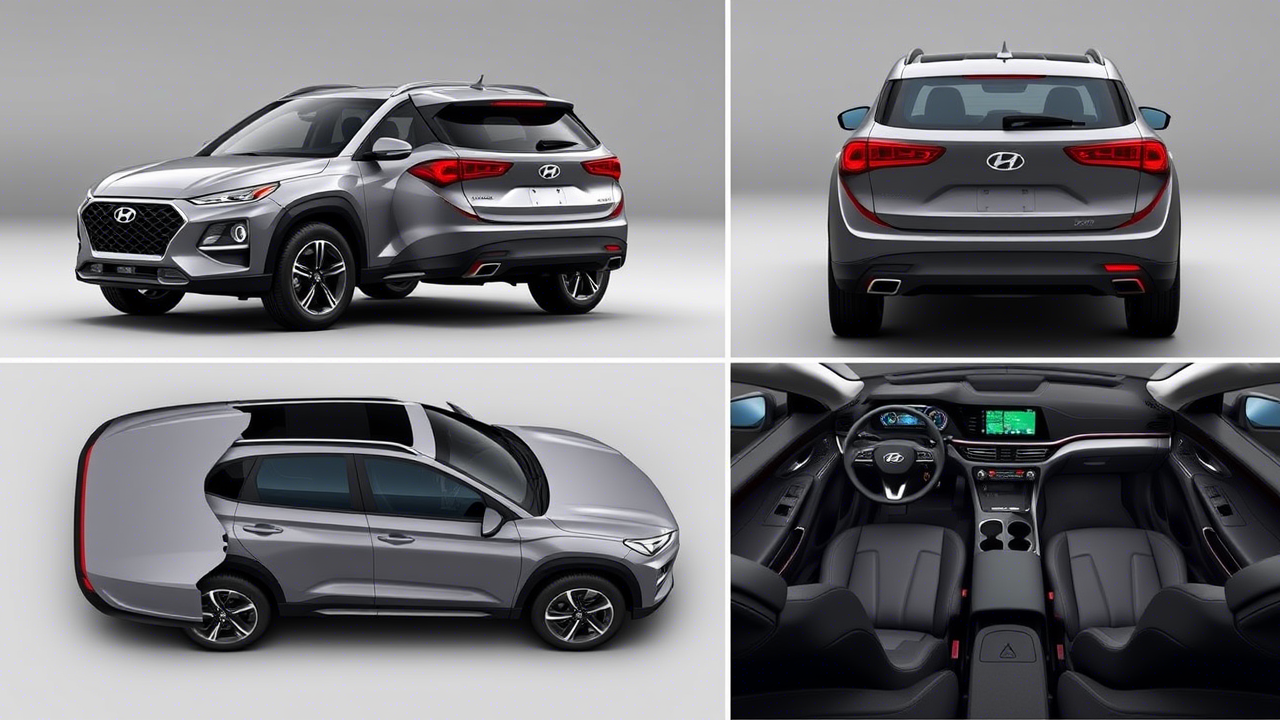In the rapidly evolving landscape of electric vehicles and energy storage, two Chinese giants have emerged as formidable contenders on the global stage. BYD Company (Build Your Dreams) and Contemporary Amperex Technology Co. Limited (CATL) represent different facets of the green revolution, with BYD focusing on end-to-end vehicle manufacturing and CATL dominating the battery production sector. As BYD prepares to release its latest earnings report, investors and industry analysts are watching closely to see if these results might tip the scales in the ongoing market capitalization battle between these two powerhouses.
The Tale of Two Titans
BYD’s Vertical Integration Strategy
BYD has distinguished itself through an ambitious vertical integration strategy that encompasses nearly every aspect of electric vehicle production. Unlike many competitors who rely heavily on external suppliers, BYD manufactures its own semiconductors, batteries, and vehicles. This approach has allowed the company, backed by legendary investor Warren Buffett, to navigate supply chain disruptions more effectively than many of its rivals.
The company’s product lineup has expanded significantly in recent years, ranging from mass-market electric vehicles to premium offerings under its new luxury brand. BYD has also diversified beyond passenger vehicles to include commercial vehicles, monorails, and energy storage solutions. This comprehensive approach has positioned BYD as China’s largest EV manufacturer and a growing international player with expanding operations across Europe, Southeast Asia, and Latin America.
CATL’s Battery Dominance
CATL, meanwhile, has pursued a different but equally successful strategy by focusing intensively on becoming the world’s preeminent battery manufacturer. The company supplies batteries to a wide range of global automakers, including Tesla, Volkswagen, BMW, and domestic Chinese brands. This specialization has allowed CATL to achieve economies of scale and technological advantages that few competitors can match.
CATL’s research and development efforts have yielded significant breakthroughs in battery technology, including advances in energy density, charging speeds, and manufacturing efficiency. The company’s new sodium-ion batteries and cell-to-pack innovations represent potentially game-changing developments for the industry, promising lower costs and reduced reliance on rare earth materials.
Market Capitalization: A Measure of Investor Confidence
The market capitalization of these companies—calculated by multiplying the share price by the number of outstanding shares—reflects investor sentiment about their future prospects. For much of the past few years, CATL maintained a significant lead over BYD in this metric, reflecting the market’s view that battery technology represented the most critical component in the electric vehicle value chain.
However, recent quarters have seen this gap narrow considerably. BYD’s successful expansion into international markets and its growing sales volumes have boosted investor confidence, while concerns about increasing competition and potential overcapacity in the battery sector have tempered some of the enthusiasm for CATL’s stock.
Upcoming Earnings: Potential Market-Cap Catalyst
BYD’s upcoming earnings announcement represents a potential inflection point in this rivalry. Analysts are forecasting robust results, building on the company’s strong performance in previous quarters. Several key metrics will be under particular scrutiny:
Vehicle Delivery Growth
BYD has consistently posted impressive year-over-year growth in vehicle deliveries, outpacing many competitors in the increasingly crowded EV market. The company’s ability to maintain this momentum, particularly in the face of price competition and economic headwinds in China, will be closely watched.
Preliminary figures suggest BYD delivered approximately 300,000 new energy vehicles (including both pure electric and plug-in hybrid models) in the most recent quarter. This would represent an increase of around 35% compared to the same period last year—a remarkable achievement in a challenging market environment.
Profit Margins
Perhaps even more important than raw delivery numbers will be BYD’s profit margins. The company has worked diligently to improve its profitability, particularly in its automotive division. Analysts will be looking for evidence that BYD can maintain or enhance these margins despite downward pressure on selling prices.
The company’s vertical integration strategy may prove especially valuable in this regard. By controlling more of its supply chain, BYD potentially has greater flexibility to optimize costs and preserve margins even as competition intensifies.
International Expansion Progress
While BYD has established a dominant position in China’s domestic market, its international expansion remains at a relatively early stage. The earnings report will likely provide updates on the company’s progress in key markets such as Europe, Southeast Asia, and Latin America.
Successful penetration of these markets could significantly enhance BYD’s growth narrative, potentially justifying a higher valuation multiple and narrowing the market cap gap with CATL further.
CATL’s Countermoves
CATL is not standing still in this competition. The battery giant has been pursuing several strategic initiatives to maintain its market leadership and support its valuation:
Technological Innovation
CATL continues to invest heavily in research and development, with a particular focus on next-generation battery technologies. Recent announcements regarding sodium-ion batteries and advanced manufacturing processes underscore the company’s commitment to maintaining its technological edge.
Client Diversification
While CATL initially rose to prominence largely on the strength of its relationship with Tesla, the company has worked diligently to diversify its client base. New supply agreements with major automakers across multiple regions have reduced CATL’s dependence on any single customer.
Vertical Integration
In what some observers view as a response to BYD’s success with vertical integration, CATL has begun pursuing limited upstream and downstream expansion of its own. Investments in lithium mining operations and energy storage system development represent steps toward a more comprehensive business model.
Market Implications of the Earnings Release
The immediate market reaction to BYD’s earnings announcement may have significant implications for the relative market capitalizations of these two companies. A stronger-than-expected report could accelerate the narrowing of the gap, while disappointment might reinforce CATL’s valuation premium.
Investor Sentiment Shift
Beyond the specific financial metrics, the market will be assessing the broader narrative surrounding these companies. Is BYD successfully transforming from a Chinese automaker to a global technology company? Is CATL’s focus on battery technology proving to be the optimal strategy for capturing value in the electric vehicle ecosystem?
Regulatory Considerations
Both companies operate in an industry subject to significant government influence, both in China and internationally. Regulatory developments—such as changes to EV subsidies, battery recycling requirements, or trade policies—could substantially impact investor perceptions of future growth prospects.
Long-Term Outlook: Coexistence or Zero-Sum Game?
While media coverage often frames the relationship between BYD and CATL as a competition for market capitalization supremacy, the reality is more nuanced. These companies occupy different, though overlapping, segments of the electric vehicle value chain. Their success is not necessarily mutually exclusive, and both may continue to thrive as the global transition to electric mobility accelerates.
Collaborative Possibilities
Despite their apparent rivalry, opportunities for collaboration between these companies exist. BYD, despite producing many of its own batteries, still sources some cells from external suppliers. As production volumes increase, strategic partnerships—even between perceived competitors—may become increasingly common in the industry.
Global Expansion Trajectories
Both companies are pursuing global expansion, but with different approaches and primary target markets. BYD’s focus on vehicle exports and CATL’s emphasis on building battery production facilities near major automotive manufacturing centers represent complementary rather than directly competing strategies.
Conclusion: A Milestone in China’s Industrial Evolution
The market capitalization battle between BYD and CATL represents more than just a contest between two companies. It symbolizes China’s emergence as a global leader in clean energy technologies and advanced manufacturing. Regardless of which company holds the higher valuation at any given moment, both have demonstrated China’s ability to nurture world-class enterprises in sectors critical to the future global economy.
As BYD’s earnings announcement approaches, investors would be wise to look beyond the immediate impact on market capitalization rankings. The long-term success of both companies will depend on their ability to execute their respective strategies in an increasingly competitive global market, navigate complex regulatory environments, and continue driving technological innovation.
For industry observers, the real significance of this rivalry lies not in which company achieves the higher market capitalization, but in how these two distinctly different business models—vertical integration versus specialized focus—perform in the rapidly evolving clean energy landscape. The lessons learned from this corporate competition will likely influence strategic decisions across the global automotive and energy sectors for years to come.




